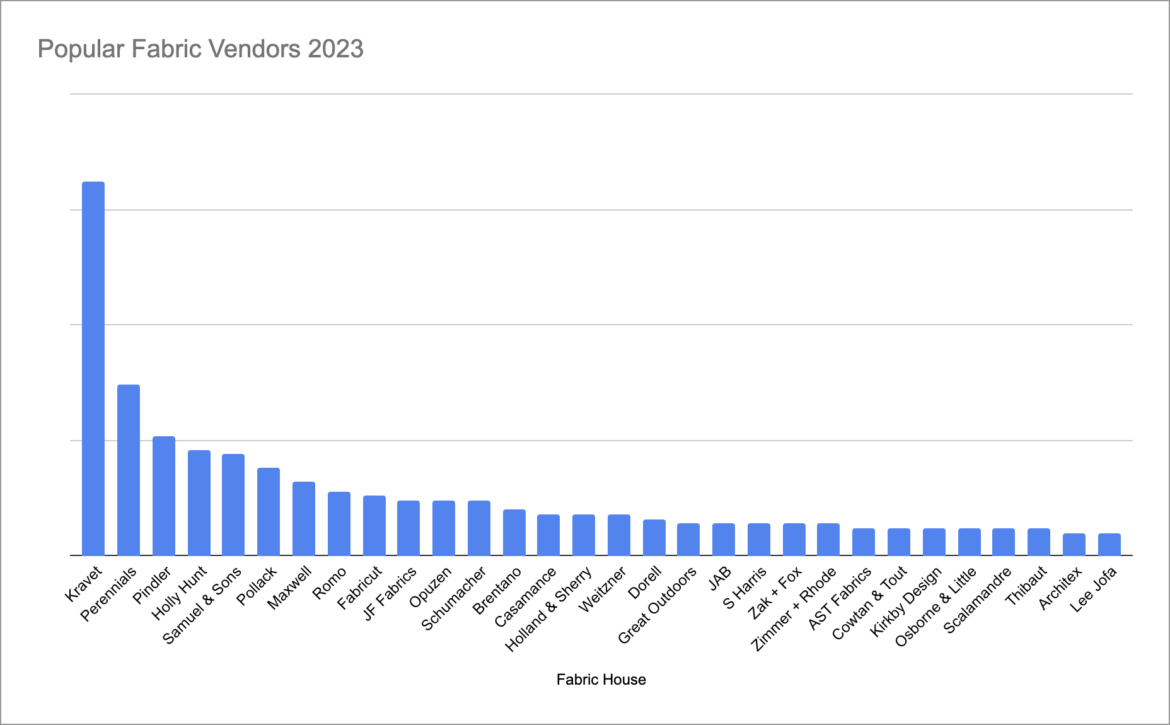Buildlane Keeps Short Lead Times Without Any Foam
The design industry was recently rocked by a foam shortage that had some manufacturers doubling or tripling their lead times—or in some cases simply throwing up their hands and saying, “We’ll let you know when we know.”
Here at Buildlane we found a clever way around it. We didn’t leave unscathed, but we batted away disaster. As a growing company we insisted on keeping the consistency we were known for—especially the adherence to deadlines—foam be damned.
Here’s a snapshot of actual production times from this past spring/summer:
| Month | Avg Production (Days) | Avg Production (Weeks) |
| May 2021 | 53 | 7.57 |
| June 2021 | 61 | 8.71 |
| July 2021 | 64 | 9.14 |
Over the years we’ve experimented with different lead times and we landed on a 8-10 week lead time as both doable for our furniture makers and desirable for most designer’s planning. So that is a range we monitor closely to make sure we are staying within it.
Making our data work for designers
When our factories first reported that foam shortages had finally hit their vendors, our first stop was the desk of George Gearhart, who handles product here at Buildlane and is also responsible for everything you don’t see. Namely, our data silos and internal tools that allow us to look at furniture building through a very unique lens.
To cut off future issues (and allow a buffer for projects currently in production) we met with the factories and made our best determination of at what speed the foam would be rationed over the coming months.
From there we looked at historical lead times and seasonality. All this data combined to give us a recommendation of how the factories needed to adjust their lead times on quotes.
You can see from the graph below how those adjustments played out over the last couple months.

And while we’re sharing data, here’s an interesting breakdown of how piece type is reflected by quoted lead time.

Making deadline magic — thank our factory network
The foam shortage was new and unexpected. But so is the Buildlane business model. Because we work with many factories and workrooms, we were able to address the foam shortage as a team. The shared goal: Getting designers their pieces on time and on budget.

“The shared goal: Getting designers their pieces on time and on budget.“
Design by Amity Worrel and Co
Some factories had stockpiled in advance and thus had a surplus of foam; others had desperate need. So we brought all parties to the table and, with the blessing of our designer clients, creatively swapped around orders so that furniture in the queue was addressed by factories with the right expertise and the right supply. Our intimate knowledge of craftsmanship specialties, supply, and production queues let us do this.
And our production team had a heartwarming experience finding out that the factory and workroom teams they’d signed on were indeed open to this level of sharing and collaboration. All in the name of getting things done.

Breaking the bad news
While it was amazing to have saved so many orders from deadline disruption, there were a handful whose solution was harder: simply wait.
So we offered exactly what designers tell us they want:
- Accurate information
- An early warning
With those things in mind our COO Heather Zeilman tracked down anyone and everyone with intel about a piece in production — whatever could help gleen what the future could look like. She reached out directly to our designer clients with an accurate, updated completion date — early in the production timeline — so each designer could prep their client or create a backup plan.

“In an uncertain world, the smaller your supply chain, the more reliably you can get your work done.”
Design by Butterlutz Interiors
A look ahead: Foam isn’t the problem
Foam shortages have improved and we’re still monitoring the situation — but that’s not the headline challenge any more.
The foam situation pales in comparison to what’s happening with overseas manufacturing. There’s no shortage of reporting about furniture companies turning away business because they can’t get their product from where it’s manufactured overseas to designers Stateside.
One upside: Shortages and lead times have strengthened the design community’s relationship with domestic furniture makers. We hear again and again from designers who are excited that we make all our furniture in the US. In an uncertain world, the smaller your supply chain, the more reliably you can get your work done.
As for us, we’ve been overjoyed to see the renewed interest in domestic furniture makers this year — and we’re going to keep finding creative and data-driven solutions to the challenges ahead.







THanks for being on top of things!